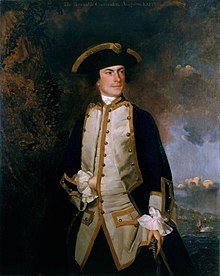Last week
Connecticut Public reported how Middletown,
Connecticut, renamed a street after Prince Mortimer, a man
enslaved in that town before and after the Revolutionary War.
Prince Mortimer Avenue was once a walkway connecting the Irish-born trader Philip Mortimer’s mansion and his
ropewalk, where he assigned his bondsman Prince to work as a spinner.
In 2006, Denis R. Caron published a book about the enslaved ropemaker:
A Century in Captivity: The Life and Trials of Prince Mortimer, a Connecticut Slave.
More recently, John Mills has delved into Prince Mortimer’s life, sharing his work on
his nonprofit website and
at Enslaved.org. Mills led the push for memorializing Prince Mortimer, as
the Middletown Press reported in 2023.
In a
Commonplace review, Watson Dennison complained that Caron’s book about Prince Mortimer actually had very little to say about him, and a lot more about the Connecticut prison system in which he spent the last years of his life after being convicted of
attempted murder. Dennison also felt that Caron mistakenly portrayed slavery in Connecticut as “a benign institution,” based on outdated analyses.
Studying the latest scholarship is something an author can control. Having detailed sources isn’t. For example, Caron found that no record of Prince Mortimer’s criminal
trial survives. So unfortunately there’s no way to recount, much less assess, the evidence in that case.
The sources we do have can also be shaky. The earliest author to write about Prince Mortimer was Richard H. Phelps, who in 1844 published the first edition of his
Newgate of Connecticut. Having grown up near that
notorious prison made from the Simsbury copper mine, Phelps seems to have created this book for the edification of tourists.
Apparently Phelps conversed with Prince Mortimer himself before his death in 1834. He said the aged inmate was “supposed to be 110 years old,” having been born in Guinea and kidnapped to America as a
child. But of course we don’t have records to corroborate that age.
Phelps also described Prince Mortimer as an a war veteran:
He was a servant to different officers in the Revolutionary War—had been sent on errands by General [George] Washington, and said he had “straddled many a cannon when fired by the Americans at the British troops.”
Again, there’s no other record of such service. (And that’s not a safe way to fire a cannon.)
On the one hand, we want to respect the personal statements of Prince Mortimer, wrenched away from his family and terribly victimized through life. On the other hand, exaggerating one’s age, military service, and proximity to the beloved Washington were common fibs for old men in the early 1800s, white or black. Such claims might be most understandable coming from an old man forced into prison after a lifetime of slave labor who needed all the sympathy he could get.
The earliest contemporaneous evidence about Prince Mortimer appears to be Philip Mortimer’s will, signed in 1792. That document makes clear that “my Negro Prince” was a valuable asset. While the merchant bequeathed freedom to most of the people he enslaved on his death, he wanted Prince and another man, Peter, to “be kept at spinning” in the ropewalk for the benefit of his niece’s husband, George Starr, for another three years.
It might be a mistake to accept Phelps’s 1844 statements as facts and anchor all other evidence about Prince Mortimer’s life to them. Caron and Mills describe Philip Mortimer sending his enslaved man Prince to war in 1780. Even though that man’s skills would probably have made him more valuable, to both his owner and the American cause, in the ropewalk. And even though he was, in their analysis, in his fifties and in poor health. And even though there’s no record of such an action.
At the same time, there’s solid contemporaneous evidence that Philip Mortimer enslaved Prince Mortimer in Middleton, making him work in the ropewalk. He did walk the path now known as Prince Mortimer Avenue as an enforced laborer.
TOMORROW: The Mortimers of Boston.








%2C_Nova_Scotia.png/250px-James_Moody_(1744-1809)%2C_Nova_Scotia.png)











